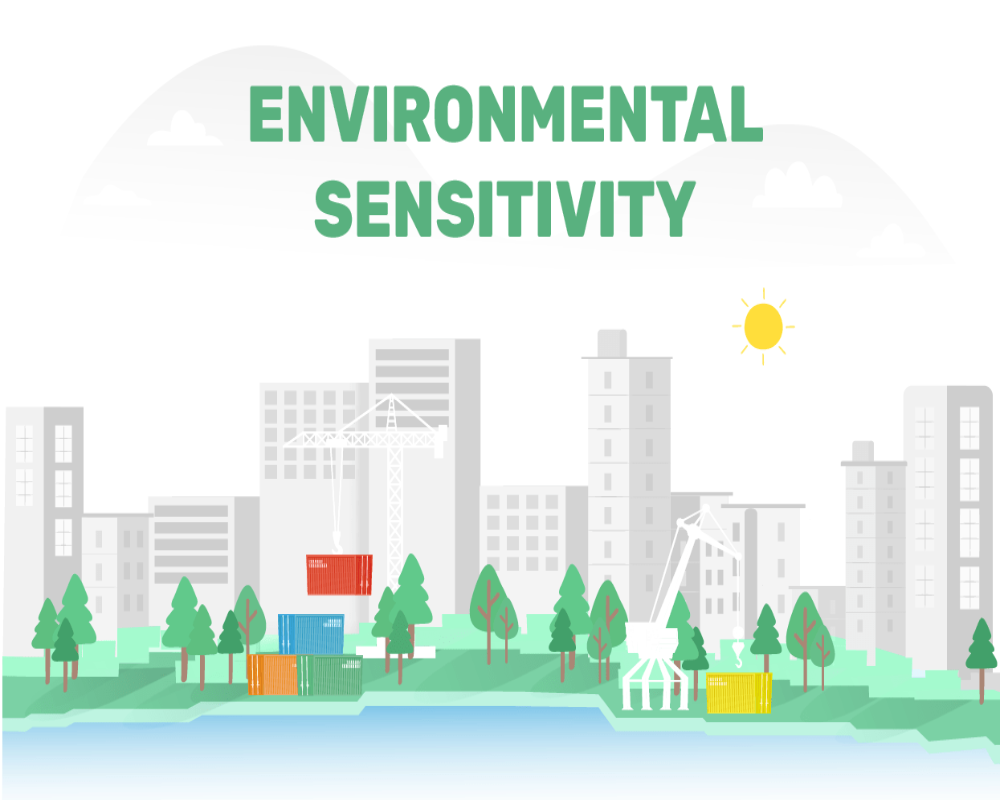Introduction
The location of an industrial or infrastructure project plays a pivotal role in determining its environmental sensitivity. Environmental sensitivity refers to how susceptible an area is to ecological disturbance or degradation due to human activity. Different geographical, ecological, and socio-economic characteristics of a location can greatly influence the extent and severity of environmental impacts resulting from development. Understanding the influence of location is essential for sustainable planning, regulatory compliance, and minimizing long-term ecological damage.
The decision to site a project in a particular area must consider factors such as proximity to natural habitats, water bodies, human settlements, climate conditions, and existing land use. Projects located in ecologically sensitive zones—such as wetlands, forests, coastal areas, or near wildlife habitats—require more stringent environmental safeguards due to the potential for irreversible damage.
Proximity to Ecologically Fragile Zones
Sites located near ecologically rich areas such as forests, wetlands, coral reefs, or wildlife sanctuaries are considered highly sensitive. Development in or around these zones can lead to habitat loss, fragmentation, and disturbances to native flora and fauna. For instance, industrial noise or light pollution near nesting sites can disrupt breeding cycles of birds and other wildlife. Similarly, contamination of nearby water bodies can severely impact aquatic ecosystems and migratory species. Choosing such locations without proper ecological assessments often leads to regulatory challenges, public opposition, and biodiversity loss.
Soil and Topographical Features
The type of soil and the topography of a location significantly influence its sensitivity. Steep slopes, erosion-prone areas, and regions with fragile soil structures are more vulnerable to physical degradation from construction and industrial activity. Land clearing in such areas can result in landslides, sedimentation in water bodies, and irreversible terrain damage. Additionally, some soil types are more permeable, making them more susceptible to contamination from spills, leachate, or waste disposal.
Water Resources and Aquifer Zones
Locations close to rivers, lakes, or aquifers are environmentally sensitive due to the high risk of water contamination. Discharges of untreated or poorly treated wastewater from industrial units can lead to eutrophication, groundwater pollution, and loss of aquatic life. Furthermore, over-extraction of groundwater in water-scarce regions can deplete aquifers and impact local agriculture and drinking water supplies. Industrial projects in these areas must adopt advanced water management practices and be subject to strict regulatory oversight.
Climatic Conditions and Air Quality
The climate and prevailing weather patterns in a region determine how pollutants disperse and settle in the environment. For instance, areas with low wind speeds and temperature inversions may trap air pollutants, leading to poor air quality and health hazards. Conversely, high rainfall areas are at greater risk of runoff-related pollution, which can carry industrial contaminants into nearby ecosystems. Site selection should consider these factors to ensure that emissions, effluents, and wastes do not pose amplified risks due to climatic variables.
Land Use and Human Settlement Patterns
The proximity of industrial projects to residential areas, agricultural lands, and cultural or historical sites also defines environmental sensitivity. Emissions, noise, and waste from industrial operations can affect community health, disrupt livelihoods, and reduce property values. Projects located near densely populated areas often face greater resistance from local communities and require stronger pollution control and stakeholder engagement mechanisms. Buffer zones and land use zoning regulations are essential tools to mitigate these impacts.
Cumulative Impact and Carrying Capacity
Certain locations may already be burdened with multiple developments, which collectively strain the local environment. The cumulative impact of new projects in such areas can exceed the natural carrying capacity of the region—its ability to absorb impacts without environmental degradation. Over-industrialization can lead to resource exhaustion, waste management failures, and decline in overall ecosystem services. Proper assessment of regional development plans and environmental load is critical before approving additional projects in such locations.
Conclusion
The location of a project directly influences its environmental sensitivity and the scale of mitigation required. Sites near natural ecosystems, water bodies, or populated areas demand more rigorous environmental planning and monitoring. By carefully analyzing the environmental characteristics of a location during the planning stage, developers can minimize ecological harm, ensure regulatory compliance, and enhance long-term sustainability. Incorporating location-specific strategies into environmental impact assessments is essential for aligning industrial growth with environmental preservation and community well-being.
Hashtags
#EnvironmentalSensitivity #LocationImpact #Sustainability #EcoAwareness #GeographicInfluence #ClimateChange #EnvironmentalImpact #LocalEcosystems #NatureConservation #GreenLiving #CommunityAwareness #Biodiversity #EnvironmentalJustice #UrbanPlanning #RuralSustainability #ClimateAction #EcoFriendly #EnvironmentalEducation #SustainableDevelopment #PlaceBasedImpact


